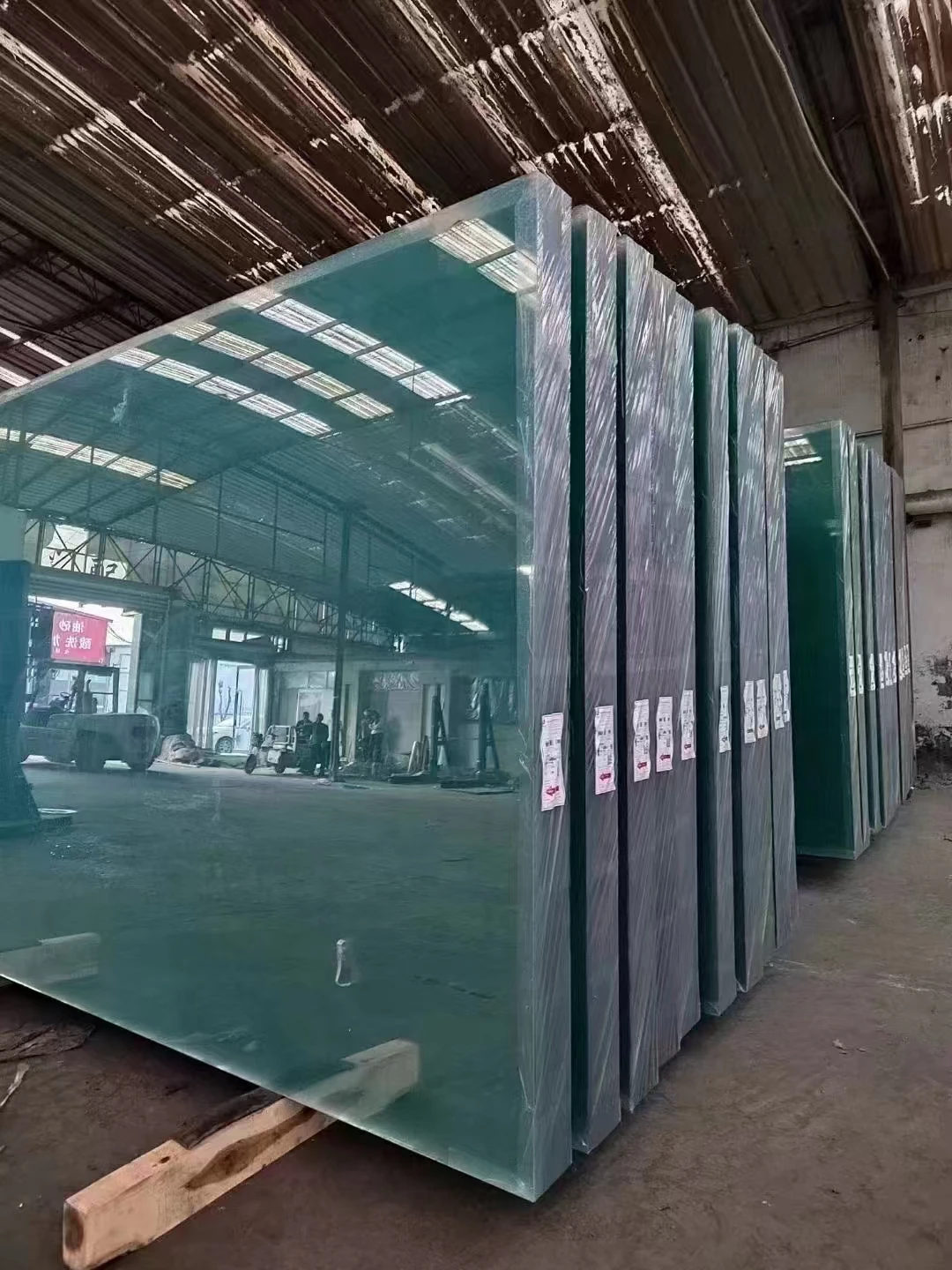Understanding Tinted and Reflective Glass Benefits and Applications
In the world of architecture and design, glass plays a crucial role in our built environment. It enables natural light to permeate indoor spaces while providing views of the outside world. However, as the demand for energy efficiency and aesthetic appeal grows, tinted and reflective glass has gained prominence. This article explores the characteristics, benefits, and applications of these innovative glazing solutions.
What is Tinted Glass?
Tinted glass is treated with metallic or ceramic coatings that add color and reduce the amount of visible light transmitted through the glass. The degree of tint can vary significantly, offering options that range from light shades to deep, dark hues. The primary purpose of tinted glass is to control solar heat gain and glare, thus improving indoor comfort. By absorbing a portion of the sunlight that strikes its surface, tinted glass helps maintain a more stable temperature inside buildings.
What is Reflective Glass?
Reflective glass, on the other hand, has a thin metallic coating that reflects a significant portion of solar radiation. This coating can occur on one side or both sides of the glass, depending on the desired effect. Reflective glass can appear mirrored, providing not only solar control but also enhancing privacy for occupants. The reflective nature helps minimize glare while also reducing the need for artificial lighting, as it can redirect natural light into living spaces.
Benefits of Tinted and Reflective Glass
1. Energy Efficiency One of the most significant advantages of both tinted and reflective glass is their energy-saving benefits. By reducing heat gain during hot weather, they decrease reliance on air conditioning systems. This reduction in energy consumption not only lowers utility bills but also lessens the building's carbon footprint.
2. Glare Reduction Both types of glass significantly reduce glare, which can be particularly advantageous in commercial spaces where computers and screens are prevalent. By minimizing harsh sunlight, tinted and reflective glass can enhance the comfort and productivity of occupants.
tinted and reflective glass
3. UV Protection Tinted and reflective glass offers protection against harmful ultraviolet (UV) rays from the sun. Prolonged exposure to UV radiation can fade interior furnishings, artwork, and flooring. By blocking a substantial percentage of these rays, stained and reflective glass can help preserve the integrity of indoor materials.
4. Aesthetic Appeal The variety of colors and finishes available in tinted glass allows architects and builders to create visually stunning facades that enhance the overall design of a building. Reflective glass can contribute to a modern look, creating a sleek exterior that stands out in urban environments.
5. Privacy and Security Reflective glass provides a degree of privacy during the day, as it is more difficult to see inside buildings when viewed from the outside. This feature is particularly beneficial in densely populated areas. Moreover, both types of glass can also enhance security by making it harder for intruders to see into a property.
Applications of Tinted and Reflective Glass
The applications of tinted and reflective glass are vast, ranging from residential homes to skyscrapers. In commercial buildings, these glazing solutions are often employed in offices, hotels, and shopping centers to enhance energy efficiency and comfort. In residential settings, tinted glass is commonly used in windows and patio doors to create a retreat from the sun's harsh rays while maintaining an inviting atmosphere.
Reflective glass is frequently used in high-rise buildings, where its ability to reflect sunlight can significantly reduce heat buildup. This can help maintain a comfortable environment for the occupants while minimizing the energy costs associated with cooling systems.
Moreover, tinted glass technology is evolving, with advances that include smart-tinting solutions that can change the level of tint based on sunlight intensity, providing even greater control over energy expenditure and comfort.
Conclusion
In conclusion, tinted and reflective glass is a vital innovation in modern architecture and interior design. Their benefits—ranging from energy efficiency and glare reduction to aesthetic enhancements and privacy—make them an ideal choice for a variety of applications. As sustainability continues to be a focal point in the design industry, the use of tinted and reflective glass will likely expand, offering solutions that blend functionality with style.
 Afrikaans
Afrikaans  Albanian
Albanian  Amharic
Amharic  Arabic
Arabic  Armenian
Armenian  Azerbaijani
Azerbaijani  Basque
Basque  Belarusian
Belarusian  Bengali
Bengali  Bosnian
Bosnian  Bulgarian
Bulgarian  Catalan
Catalan  Cebuano
Cebuano  Corsican
Corsican  Croatian
Croatian  Czech
Czech  Danish
Danish  Dutch
Dutch  English
English  Esperanto
Esperanto  Estonian
Estonian  Finnish
Finnish  French
French  Frisian
Frisian  Galician
Galician  Georgian
Georgian  German
German  Greek
Greek  Gujarati
Gujarati  Haitian Creole
Haitian Creole  hausa
hausa  hawaiian
hawaiian  Hebrew
Hebrew  Hindi
Hindi  Miao
Miao  Hungarian
Hungarian  Icelandic
Icelandic  igbo
igbo  Indonesian
Indonesian  irish
irish  Italian
Italian  Japanese
Japanese  Javanese
Javanese  Kannada
Kannada  kazakh
kazakh  Khmer
Khmer  Rwandese
Rwandese  Korean
Korean  Kurdish
Kurdish  Kyrgyz
Kyrgyz  Lao
Lao  Latin
Latin  Latvian
Latvian  Lithuanian
Lithuanian  Luxembourgish
Luxembourgish  Macedonian
Macedonian  Malgashi
Malgashi  Malay
Malay  Malayalam
Malayalam  Maltese
Maltese  Maori
Maori  Marathi
Marathi  Mongolian
Mongolian  Myanmar
Myanmar  Nepali
Nepali  Norwegian
Norwegian  Norwegian
Norwegian  Occitan
Occitan  Pashto
Pashto  Persian
Persian  Polish
Polish  Portuguese
Portuguese  Punjabi
Punjabi  Romanian
Romanian  Russian
Russian  Samoan
Samoan  Scottish Gaelic
Scottish Gaelic  Serbian
Serbian  Sesotho
Sesotho  Shona
Shona  Sindhi
Sindhi  Sinhala
Sinhala  Slovak
Slovak  Slovenian
Slovenian  Somali
Somali  Spanish
Spanish  Sundanese
Sundanese  Swahili
Swahili  Swedish
Swedish  Tagalog
Tagalog  Tajik
Tajik  Tamil
Tamil  Tatar
Tatar  Telugu
Telugu  Thai
Thai  Turkish
Turkish  Turkmen
Turkmen  Ukrainian
Ukrainian  Urdu
Urdu  Uighur
Uighur  Uzbek
Uzbek  Vietnamese
Vietnamese  Welsh
Welsh  Bantu
Bantu  Yiddish
Yiddish  Yoruba
Yoruba  Zulu
Zulu 

